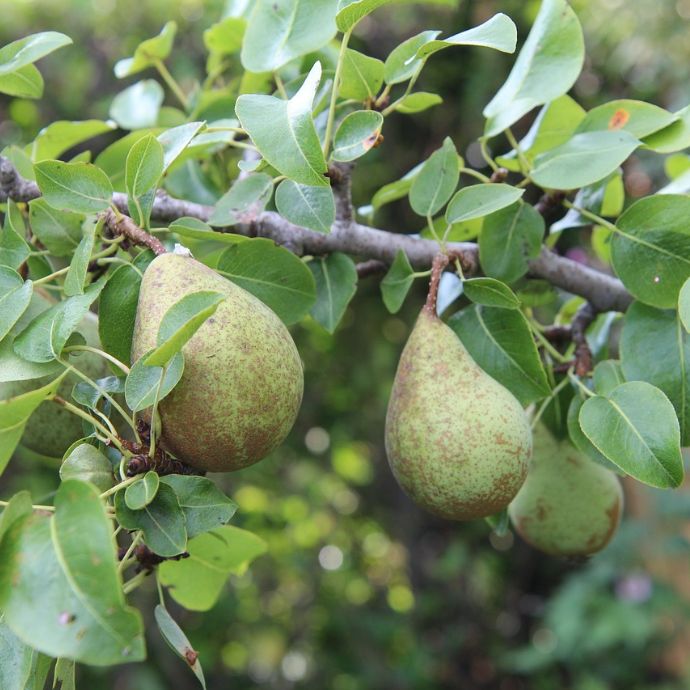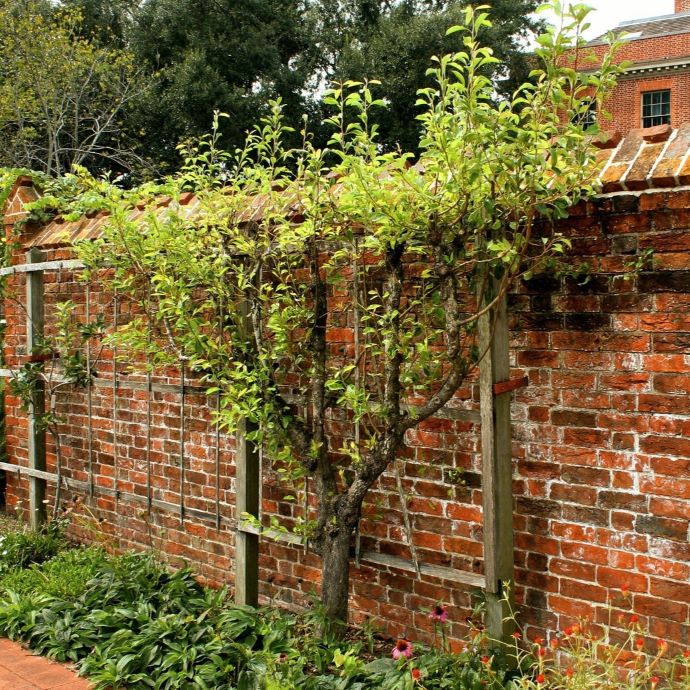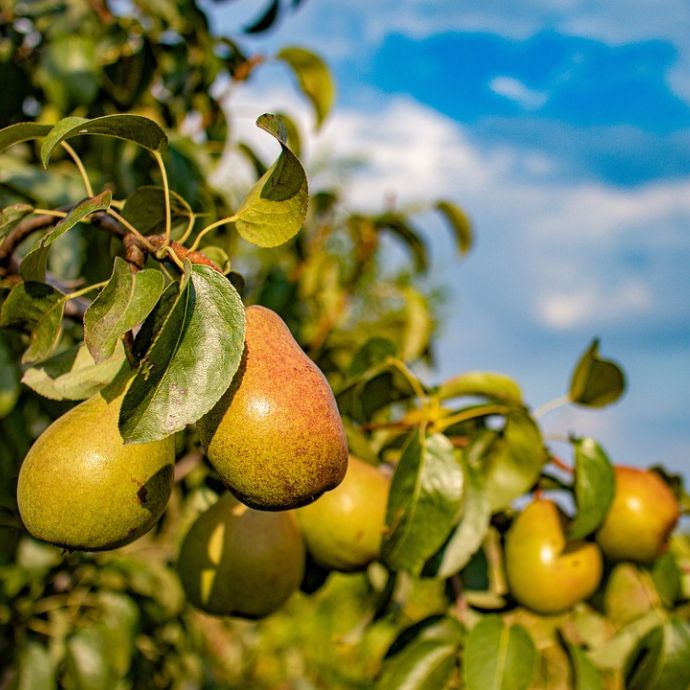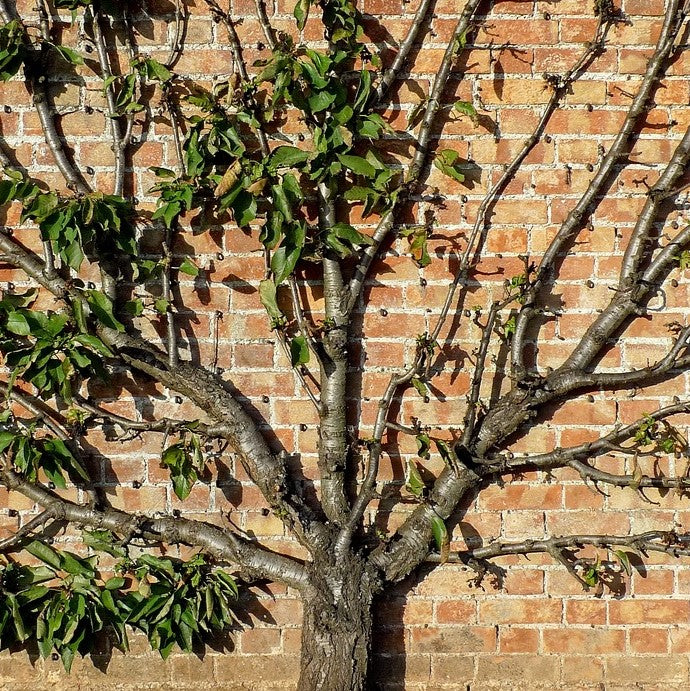Advice & Inspiration
How to Grow Grapes: UK Beginner’s Guide

There’s a persistent myth that it’s impossible to grow grapes successfully in the UK, but we’re here to bust it! Today’s advanced breeding techniques have resulted in hardier, more productive plants which grow vigorously and fruit well in our own ‘special’ climate.
With a little advice from our growers and a good healthy grafted plant, you don’t have to be an expert to enjoy watching your grapevine grow and fruit even in the coldest areas.
Here’s everything you need to know how to grow grapes…
Jump to:
- Growing from seeds
- Growing from plants
- Dessert vs wine grapes
- Seedless grapes
- Growing outdoors vs indoors
- How to plant
- Growing in pots
- Support and training vines
- Watering
- Feeding
- Pruning
- When will it fruit?
- How long will it live?
- Harvesting and storing
- Problem solving
Can you grow grapes from seed?
It’s certainly possible to grow a grape vine from seed, but it’s a lengthy process and a little complicated. You’ll need to be patient, as the vine won’t be fully grown for several years and you’ll have to wait even longer for fruit, but that said, it can be a really fun and satisfying project.
- First you’ll need to check if your grape seeds are viable. You can do this by putting them in a bowl of water - they should sink to the bottom, so any that float should be
condemned as witchesdiscarded. - Grape seeds need to be stratified - this means that they need a long period of cold so you should start them off in December. Plant them in a bed or peat moss, wet paper towels or vermiculite, cover them with about 1.25cm of the same material, place inside an airtight container and put them in the fridge.
- After two or three months, remove your seeds and pot them up in compost, either in individual pots or 4cm apart in a tray.
- Keep your seeds warm (above 15°C) at all times (a heat mat is a good idea), and keep the soil moist but not waterlogged. The seeds should take between 2-8 weeks to germinate.
- When your seedlings are about 8cm tall, you can pot them on into larger pots, but keep them indoors until they’re around 30cm tall and have at least 5-6 leaves.
Growing grapes from plants
The easiest and most reliable way of growing a grape vine is from a grafted plant or cutting. All of our grape plants are grown this way, meaning that they’ll be true to their parent plant and are guaranteed to be the right variety. They’re stronger and more vigorous than those grown from seed, and will fruit earlier. Additionally, this method protects them against the grape disease phylloxera, which had a catastrophic effect on vines in the past.

Dessert vs wine grapes
When choosing your grape vine, you should consider whether you want to eat the fruit (dessert grapes) or make it into wine (wine grapes), whether that’s red or white. Some varieties are dual purpose, so you can get the best of both!
Growing seedless grapes
The best results for UK grown grapes are usually from seeded varieties, as they tend to be hardier. However, if you’re growing outdoors in the south of the UK or growing indoors, you should get decent results from seedless grape vines (although they may still produce seeds if the growing conditions are less than ideal).
Can you grow grapes outdoors?
Generally speaking, if you’re planning to grow outdoors, wine grapes will produce better results in the UK. If you’re in a warmer area though, any vine will grow well outdoors, provided it’s in a sunny, sheltered position. Choose the warmest, most sheltered position in your garden - a sunny wall or pergola is best - and mix in plenty of compost or well rotted manure with the planting soil, which should be well draining as grapevines hate to be waterlogged.
Growing grapes indoors
All types of grapes grow well in a conservatory or greenhouse, so if you have the space to grow under cover, you’ll be able to produce grapes successfully wherever you live. For smaller greenhouses, make sure you choose a less vigorous grape variety, as some can grow very large.
Plant your vine in a large, deep container at the far end of the greenhouse and train the stems along the roof and walls with a network of wires. Grapevines need a lot of space between them - at least a metre - so plant only one unless your greenhouse is extra large. Make sure you ventilate the area well, to allow for air circulation and prevent moulds and mildews developing.
The best of both worlds
The indoor/outdoor method for growing grapes has been a tried and trusted method for centuries and many gardeners swear by it. Plant your grapevine in the ground close to your greenhouse, then train its stems through a gap at the bottom or a window at the top of the structure. Your vine will benefit from rainwater (meaning less work for you) while also fruiting better for being protected from the cold.
Planting grape vines
Wherever you choose to grow your grape vine, make sure it’s a spot where the plant will get plenty of sun, as grapes need at least six hours of sunlight per day to ripen properly and develop their sweetness. Prepare your support (see below) then dig a hole larger than the plant’s root ball and add plenty of good compost or well rotted manure to the hole.
You should be able to see a join on the base of the vine where it has been grafted - this join needs to stay slightly above the soil. Grapes need well drained soil, so make sure to add gravel or broken crockery beneath the roots if you’re planting in a pot, and make sure the pot has holes in the bottom. If you’re going full-on vineyard and planting a row of vines, space them between 1-1.5m apart.
After planting your vine, give it a good mulch with woodchip, manure or compost, and refresh this every year.

Growing grape vines in pots
Grape vines do really well in pots. The best varieties to choose are those that don’t have a huge eventual height and spread, but any grapevine will thrive in a pot as long as it’s large enough - at least 45cm deep and wide is a good size, but the bigger the better really.
Grape vines hate to be waterlogged, so make sure your pot has holes in the bottom and use a potting mix or compost of which a third is made up of grit. Plants in pots generally need watering and feeding more often, and grapes are no exception. Feed them a general purpose fertiliser every 1-2 weeks or use slow release granules once a month throughout the growing season.
Check out our pruning guide to keep them the right size for the space they’re growing in.
Supports for grape vines
Grape vines can get large and heavy as they grow (especially when the fruit comes along) so a good support system is vital. This can be a wall, fence, pergola or arch - or training with strong wires. Train your plant’s stems in the direction you want them to grow by tying them in to the support with plant ties, wire or cable ties.
To support your vines on a wall or across a greenhouse or conservatory ceiling, space wires 25- 30cm apart, tie in the main stems and keep tying in the vines along the wires as they grow.
How to train your grape vine
You don’t necessarily have to train your grape vine beyond a bit of tying it into the supports, but it can increase your vine’s health and productivity to do so. There are two main established training methods.
The Guyot method
This is how you’ll see grape vines growing if you ever visit a vineyard - it’s useful for larger gardens and allotments too. The method involves growing rows of vines trained along horizontal wires. If you fancy giving it a go, this article from the RHS has all the details.
The rod and spur (cordon) method
This is the method most often used in homes and gardens, especially in greenhouses. It involves training the vine into a single main stem with fruiting spurs growing from it, rather than a lot of large stems. It’s a useful way of restricting the space a vine takes up, while still keeping it productive - you’ll find full instructions in this RHS guide.
Watering grape vines
To keep your grape vines healthy, check regularly to make sure the soil is consistently moist but never waterlogged. Outdoor grapes should only need watering during hot or dry spells, but grapes grown indoors and those in pots will need regular watering during the growing season. This can be reduced throughout autumn and winter when the vines are dormant.

Feeding grapes
Grapes are hungry plants and benefit from regular feeding. Give them a fresh layer of mulch (well rotted manure is best) every spring, then a sprinkle of fertiliser such as blood, fish and bone as the new growth starts to appear. Throughout the summer, apply a high potassium fertiliser such as tomato feed every few weeks, increasing to every week once the fruit appears, continuing until it’s fully ripe.
Pruning grape vines
You don’t have to prune your grape vine, but if you do it will help the plant develop healthy roots and shoots, giving it a good basis for future fruiting. As your plant grows throughout the following few years, pruning will help it stay strong and productive at a manageable size. The bulk of pruning needs to be done when the grape vine is dormant (not growing) from late autumn to early spring. Your grape vine should be ready to prune from November, or at the point where all the leaves have all fallen and there have been no new buds developing for a month - sure signs that your plant is dormant.
Established grape vines can also be trimmed in summer if there’s a lot of excess leaf and stem growth - this will help increase the airflow around the plant and help to prevent moulds and mildew. At the same time, you can thin out the fruit, which will encourage bigger bunches of grapes. You can find out how to do all of this in our complete grape vine pruning guide.

When will my grape vine produce fruit?
Grape vines don’t usually fruit until two or three years after planting, although if the conditions are very good, it can be earlier - my vine in a conservatory fruited after eighteen months, but it did get a lot of sun.
In its first year, the vine needs to focus on developing its roots and foliage, so this is where all of its energy is going to go. By the second year, you might see a couple of small bunches of grapes, then in year three the vine will be mature enough to give you a good crop.
How can I make my grape vine fruit sooner?
There are a few things you can try to make your grape vine fruit earlier. Many growers believe that the rod and spur pruning method (see above) encourages earlier cropping, but training them on a trellis where they’re well spaced out also helps, by ensuring enough sunlight and air can reach each part of the plant. The more warmth and light they get, the better - regular feeding, careful watering and good ventilation for indoor grown vines are all helpful too.
How long do grape vines live?
Grape vines are long lived plants, with most surviving at least a few decades with good care and growing conditions. Many of them live for over a hundred years, as you can see from the huge vines in some National Trust houses. The oldest surviving grape vine in the UK can be found at Hampton Court Palace. Called The Great Vine, this Black Hamburg variety was planted by Lancelot “Capability” Brown in 1768 and at over 250 years old, is still producing a good crop!

When to harvest grapes
You’ll know your grapes are ready to harvest in late summer or through autumn, when they’re full sized, have turned their final colour and smell and taste good. The best way to be sure is to try one or seventeen two. To pick them, cut the whole bunch at the stalk just above it.
Grower’s tip: if your vine is growing outdoors, you can protect your ripening grapes from insects, birds and mice by enclosing each bunch in a gauze bag and tying it closed around the stem until you’re ready to harvest.
How to store your grape harvest
Grapes will keep for a few days to a week on the kitchen counter, but they may start to lose their crispness. The best place to keep them fresh is in the fridge, where they’ll last for around three weeks (if you can resist them that long). Whatever you do, don’t wash them before storing, as the moisture will speed up the decaying process and reduce the life of your grapes.
Freezing grapes
Grapes can be frozen and used in smoothies or sorbets. They also make a bougie substitute for ice cubes in a drink or can just be eaten as a refreshing snack. To make sure they stay separate as opposed to forming a weird mutant block, lay your grapes out on a baking tray to freeze, with space between them. Then when they’re frozen you can store them in a freezer bag or container.
How to make raisins
Drying grapes to make your own raisins is a good way of using up a glut. You can put them out in the sun for a few days (being careful to keep insects off, using a gauze screen - oh and check the forecast!) or for a few hours in the oven at a temperature of around 50°C.
Making your own wine
Of course one time-honoured way to preserve your grape harvest is to make your own wine. Wine grapes are naturally better for this, but you can use any grapes (or indeed any fruit at all, foraged or home grown).

Grape vine problems
Powdery mildew
Powdery mildew is a fungal infection which appears in summer when the humidity is higher. It looks like a white, powdery coating on the leaves, which causes them to shrivel and die.
Healthy plants are less vulnerable to infection, so water them regularly, keep plants well spaced and get rid of any weeds as soon as they appear. Most importantly, make sure your plants have plenty of air circulating them and aren’t in a damp, humid environment. If you’re growing in a greenhouse or conservatory, this means opening the doors or windows regularly. If you do get powdery mildew, it’s not necessarily fatal - prune out any affected parts of the plant and get rid of them, then the plant itself ought to be fine.
Red spider mites
These beasties can be a problem in greenhouses. They’re tiny bugs that look like red spiders which can be seen on the leaves (often under them), sucking the sap out of the plant. The affected leaves turn pale and drop off. To add insult to injury, the mites weave webs over the plant too.
If you do get red spider mites, remove the affected leaves and dispose of them. You can also spray the leaves with water to dislodge the red menace, or a mixture of soap, oil and water.
Grey mould
Grey mould is a common problem for soft fruits. It’s a fungal disease that looks like fuzzy grey or brown patches and makes the fruit’s flesh decay scarily fast. To get rid of grey mould, make sure any dead or dying parts of the plant are removed immediately, water your plant in the morning rather than the evening and make sure your vines aren’t overcrowded. If you’re growing in a greenhouse, increase the ventilation to lower the humidity - you should find the problem eases off.
Mealybugs
Mealybugs suck the sap out of plants and leave secretions on the leaves which cause black sooty mould. Gross. The best way of deterring them or evicting them from your vine is to encourage ladybirds, one of their top predators. You can do this by planting fennel, dill or marigolds nearby. At a push, I hear you can buy ladybirds online…
Need help with choosing a grapevine? Our growers will guide you through the best picks for UK gardens.



















